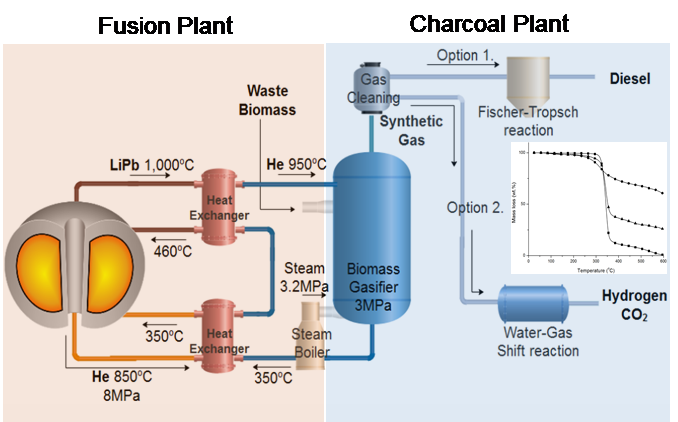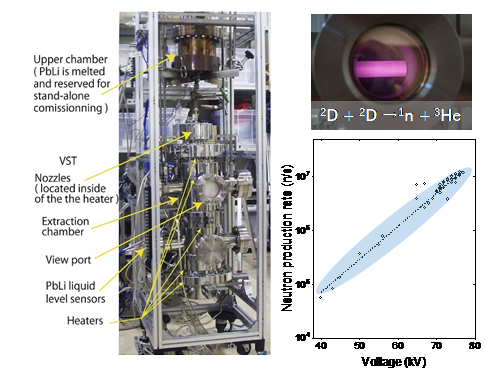Advanced Atomic Energy
Advanced Energy Generation Division Advanced Atomic Energy Research Section
Associate Professor : Juro YAGI
Professor (Concurrent) : Shigeru INAGAKI
We design and develop the zero-emission energy system powered by fusion, from its generation to utilization, and analyze it from environment, socioeconomics, and sustainability aspects.
http://www.atomic-energy.iae.kyoto-u.ac.jp/?lang=en
Design, Development and Assessment of Fusion Energy Systems
Zero-emission energy system that has little constraints of resource and environment is expected to provide ultimate solution of the environmental problem and sustainable development of human in the global scale. We study the fusion energy system design and development, as well as the integrated evaluation from social and environmental aspects. Development of new type of fusion device to generate neutron beam, conversion of fusion energy using advanced divertor and blankets, and application of energy for the production of biomass-based hydrogen and synthetic fuel are performed. Behavior of fusion fuel tritium to prove its self-sufficiency in the reactor and minimize the impact in the environment, social risk literacy of fusion energy are also studied. Thus fusion energy system is investigated from its generation to the application and adaptation to the future society and its evaluation. We are one of the leading research team of fusion technology, and regarded as a key station of international collaboration. Study of "Sustainability" on energy and environment is also our major topic.

Fusion blanket research
Fusion reactor requires blanket that utilizes neutron to produce fuels. Experimental system for fusion neutron behavior in the simulated assembly with an integrated material system is established as the 1st attempt in the world. Vacuum sieve tray (VST) concept developed by our group is tested to demonstrate the efficient recovery of heat and fuel tritium from liquid lithium lead circulating fusion blankets. Tritium pumping system to reduce tritium inventory in a fusion reactor and impurity reduction method in liquid metal to improve material compatibility are also investigated.









